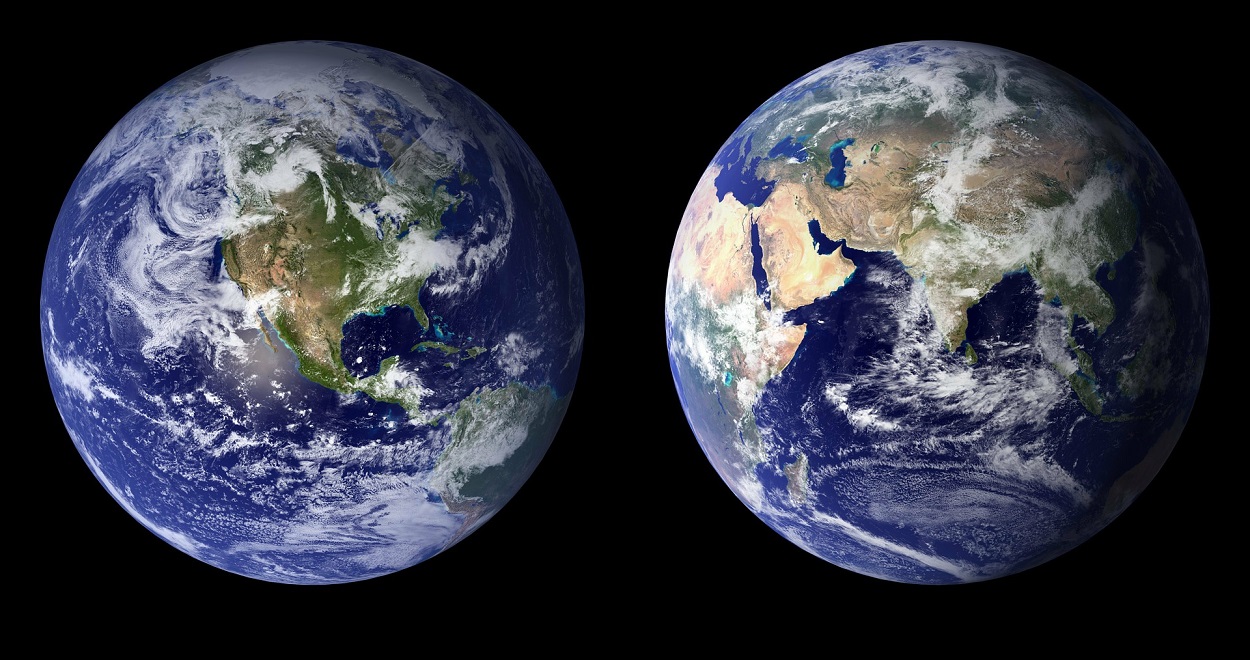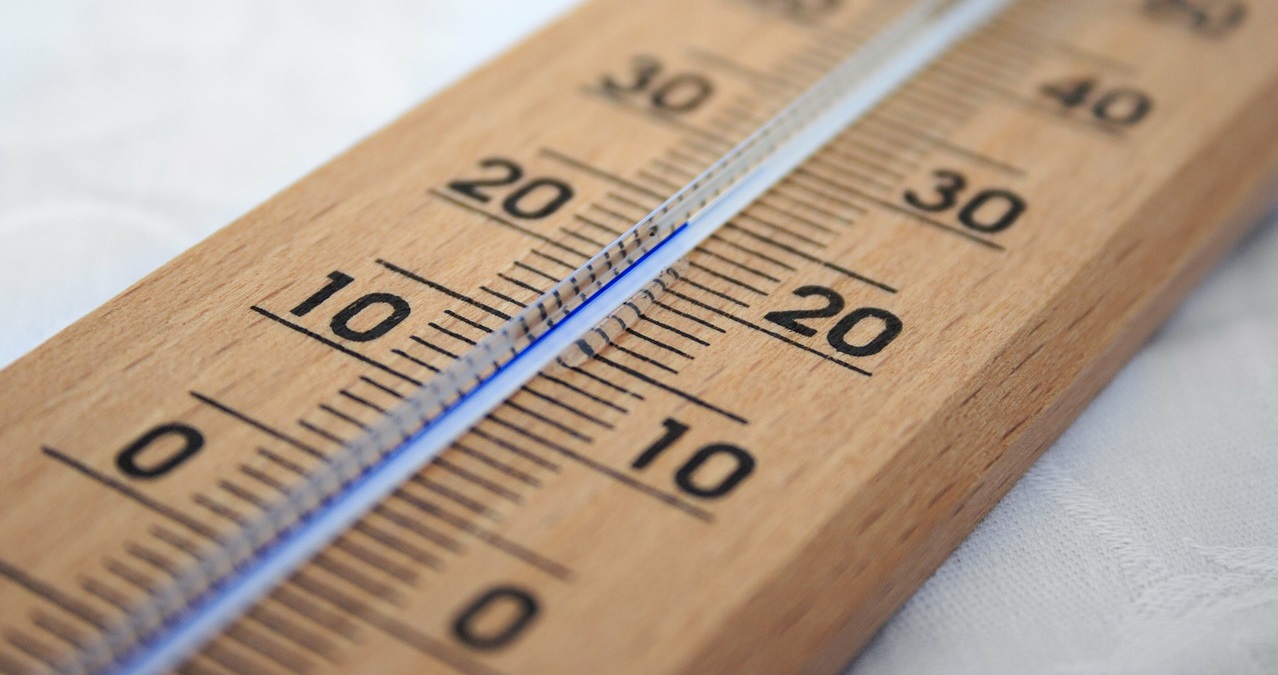信风的关键作用
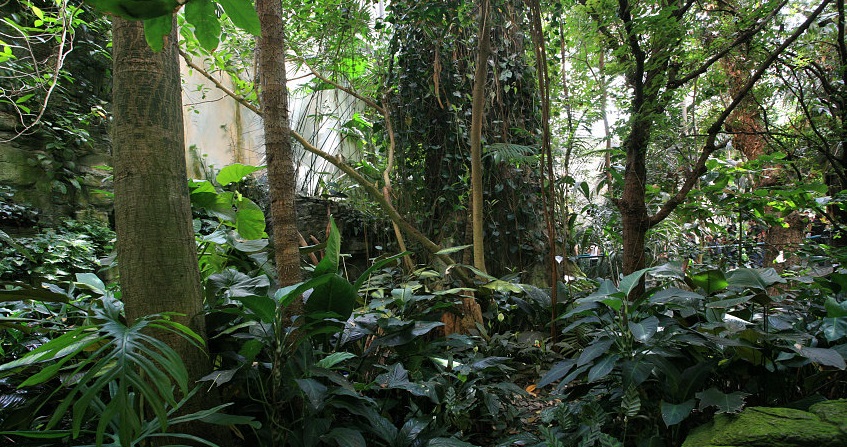
信风,是变幻莫测的热带气象最主要的特征。由于太阳直射,热带的海洋和大陆上空的空气受热变轻,使得来自北方、东方和南方的信风在此辐合。信风的辐合导致了强烈的上升运动,进而产生了赤道东风。气团抬升后在高空分流,一支向南,一支向北。这两支气流向东弯曲,在南北纬约30°处下沉至地面,形成哈得莱环流(Hadley’s cell)。受到季节交替、海陆差异以及昼夜变化的调控,该辐合带具有季节性南北移动的特征。同时这些变化也会造成辐合带上冷暖锋活动的交替,常伴随狂风骤雨。
1.赤道辐合带
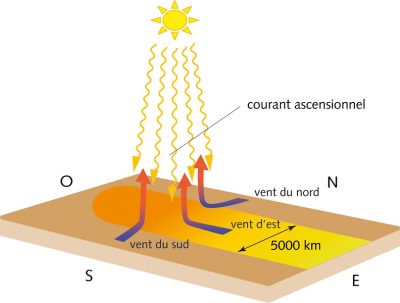
假设我们正处于春分或秋分时节。此时,太阳直射赤道地区,尽管茂密的森林吸收了大量太阳辐射,但高强度的辐射仍然快速加热空气,使得气团变轻并在对流层(troposphere)中上升(详见《地球的大气层和气体层》)。上升运动在地面形成低气压,低压的抽吸作用迫使南北两侧的空气向赤道聚集。在北半球,科里奥利力[1]使气团运动轨迹向右偏移,所以由北而来的气流向西弯曲;而在南半球,科里奥利力使气团运动轨迹向左偏移,所以由南而来的气流仍然向西弯曲(图1)。东边的气团则早在数小时前就已受热,持续上升并向西运动,其到达太阳直射的地区后,便与由南北方向而来的气流汇合,形成强劲的东风。通过上述的抽吸和抬升过程,受热程度最高的区域(即太阳直射处)周围的空气都受到影响。这一影响范围是非常大的,因为接收90%太阳辐射的区域直径高达5000 km。同时,这一受热程度最高的区域会随着太阳,以大约1600 km/h的速度向西移动(24小时绕赤道一周,约40000km)。因此,该区域以西的气团并不会向东移动,因为其在抽吸发生之前就已被卷入上升流中。需要注意的是,实际上并没有物质在以1600 km/h的速度移动,该速度仅代表太阳相对于地面上固定观测者的位移。
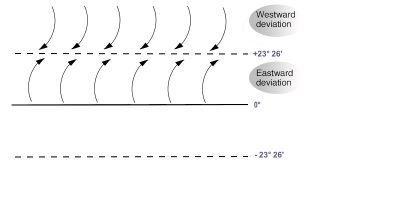
信风辐合带的位置随着太阳直射点的移动而变化,夏季向北移动至北回归线(北纬23°26’),冬季则向南移动至南回归线(南纬23°26’)。由于科里奥利力在北半球指向运动方向的右侧,在南半球指向左侧,因此,当太阳直射赤道,即春分和秋分时,辐合带关于赤道对称。而随着辐合带的北移或南移,这种对称性逐渐减弱,到夏至及冬至日完全消失。如图2所示,在夏至和冬至日,辐合带北部的偏东风与南部的偏西风部分抵消,导致赤道东风风速远低于春分和秋分日。
当信风掠过洋面时,空气从海洋中汲取了充足的水汽。在上升的过程中,水汽凝结形成暴雨,为热带地区提供了充沛的降水。同时,由于有充足的阳光照射和加热,热带地区的光合作用(见“光合作用”)非常活跃。因此,热带地区覆盖着郁郁葱葱的植被和茂密的森林。
2.信风国度——一个非常不稳定的地区
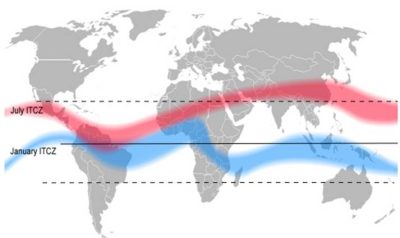
信风辐合带具有季节性南北移动的特征,并且这种移动在大陆和海洋上存在差异。夏季陆地温度高于海洋,所以信风辐合带的北移在大陆(北美、北非和亚洲)表现得更为明显(图3)。同样地,在冬季,即南半球的夏季,信风辐合带的南移在南美、撒哈拉以南的非洲地区和澳大利亚表现得更为明显。因此,赤道东风带并不是平直的,而是随着海陆分布呈现出类似于正弦波的形状(图3,红色和蓝色区域分别表示夏季和冬季)。那么,是什么造成了海陆温差呢?有两种机制可以解释这一现象。第一,海洋和陆地对太阳辐射的吸收能力不同。总体而言,到达地球的太阳辐射约有30%被反射。而海洋可以反射自身所接收太阳辐射的大约40%到60%。因此,海洋对全球平均反照率(albedo)[2],即将辐射反射回太空的比率作出了很大的贡献。而在陆地上,由于热带地区植被茂密,反照率只有10%到20%。相比之下,沙漠地区的反照率可以达到30%到50%。
第二,海表洋流的混合也会造成海陆的温度差异。海洋中存在尺度很大的温盐环流(thermohaline circulation),潮汐使海水呈周期性运动,涌浪和湍流也会随机引发海洋中的扰动。上述过程能够将热带海洋储存的热量向南北方向输送,从而使得海洋表面温度趋于均匀。而在大陆上,热量输送的载体只有空气对流。空气的输热效率远低于海水,因为其密度仅为海水密度的1/800,而比热容仅为1/4。我们可以在厨房中进行验证:浇水或吹气,哪一种方法冷却热菜的速度更快呢?此外,在空气中,水能够以多种方式存在,无论是不可见的蒸汽,还是可见的云雾。在洋面上,水分吸收热量,不断蒸发,成为水汽融入空气,直至饱和。当压力或温度下降时,空气中可容纳的水汽减少,水蒸气便会发生液化,从气态变为液态,成云致雾,偶尔还伴随着降水和风暴。这个过程会向外释放热量。空气的流动,也就是风,能通过输送水分影响这些过程,进而实现对热量的输送。
3.热带地区变幻无常的天气
不稳定和不连续的对流单体是赤道辐合带(Inter Tropical Convergence Zone,ITCZ)[3]的特征之一。这种旺盛的对流活动由以下几个原因共同造成。首先,信风的辐合将更冷、更重的气团带到了赤道地区,这些气团与局地较暖的气团相会,形成不稳定结构,催生了对流活动。这种对流结构的水平尺度范围区间大,而在垂直方向上最高可至对流层顶。旺盛的对流活动进一步导致了一系列的暖锋和冷锋活动。其中,冷锋即冷暖气团的交界,冷气团密度大,与密度较小的暖气团相会时迫使其抬升。抬升运动伴随着气团的冷却和膨胀,导致水汽迅速凝结,形成一种极具特色的云——具有砧状云顶的积雨云(cumulonimbus cloud)。积雨云的出现往往伴随着狂风骤雨,2009年6月1日,一场积雨云暴雨就曾导致一架由里约热内卢飞往巴黎的飞机发生空难(详见《雷暴:空中之电》)。
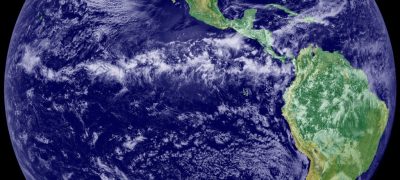
此外,另有一些机制会加剧对流不稳定,并使得热带地区的天气独具特色。首先,辐合带的低压受到太阳运动的调控。因此,除了我们先前了解到的季节性变化外,其还存在显著的日变化特征,主要表现为低压在中午最强,夜间最弱。其次,南极大陆覆盖着大量冰川,而北半球则有成片的陆地,所以北半球所吸收的太阳辐射要多于南半球,相比之下,南半球比北半球更冷。最后,辐合带南北部的温带地区存在数条稳定的高压带,各高压带之间穿插分布着低压区。在科里奥利力的作用下,低压气团呈气旋式旋转(北半球逆时针,南半球顺时针),其长长的旋臂偶尔可以穿过高压系统,延伸至热带地区。温带地区的冷空气团到达热带地区,能够加强冷锋,进一步促使暖空气抬升。这一区域在云图中表现为南北走向的白色飑线,常常发生局部阵雨(图4)。
综上所述,由信风造成的赤道辐合带(ITCZ)具有非常鲜明的特征。赤道辐合带被认为是大气环流的主要触发原因,它首先催生了哈得莱环流,而后影响了整个对流层(详见《大气环流及其构成》)。这一区域的一大特征在于剧烈的热带风暴(详见《雷暴:空中之电》),由于在此航行十分危险,19世纪的航海船队将这一区域用法语称为“黑锅”(pot-au-noir)。时至今日,穿越赤道的跨大西洋航班机组人员以及参加环球高桅横帆船比赛的船员仍在使用该称谓。
参考资料及说明
[1] 古斯塔夫·科里奥利,《台球效应的数学理论》,卡里连-戈埃里,1835年。
[2] https://fr.wikipedia.org/wiki/Albédo
[3] https://en.wikipedia.org/wiki/Intertropical_Convergence_Zone
环境百科全书由环境和能源百科全书协会出版 (www.a3e.fr),该协会与格勒诺布尔阿尔卑斯大学和格勒诺布尔INP有合同关系,并由法国科学院赞助。
引用这篇文章: MOREAU René (2024年2月24日), 信风的关键作用, 环境百科全书,咨询于 2025年3月30日 [在线ISSN 2555-0950]网址: https://www.encyclopedie-environnement.org/zh/air-zh/key-role-of-the-trade-winds/.
环境百科全书中的文章是根据知识共享BY-NC-SA许可条款提供的,该许可授权复制的条件是:引用来源,不作商业使用,共享相同的初始条件,并且在每次重复使用或分发时复制知识共享BY-NC-SA许可声明。







